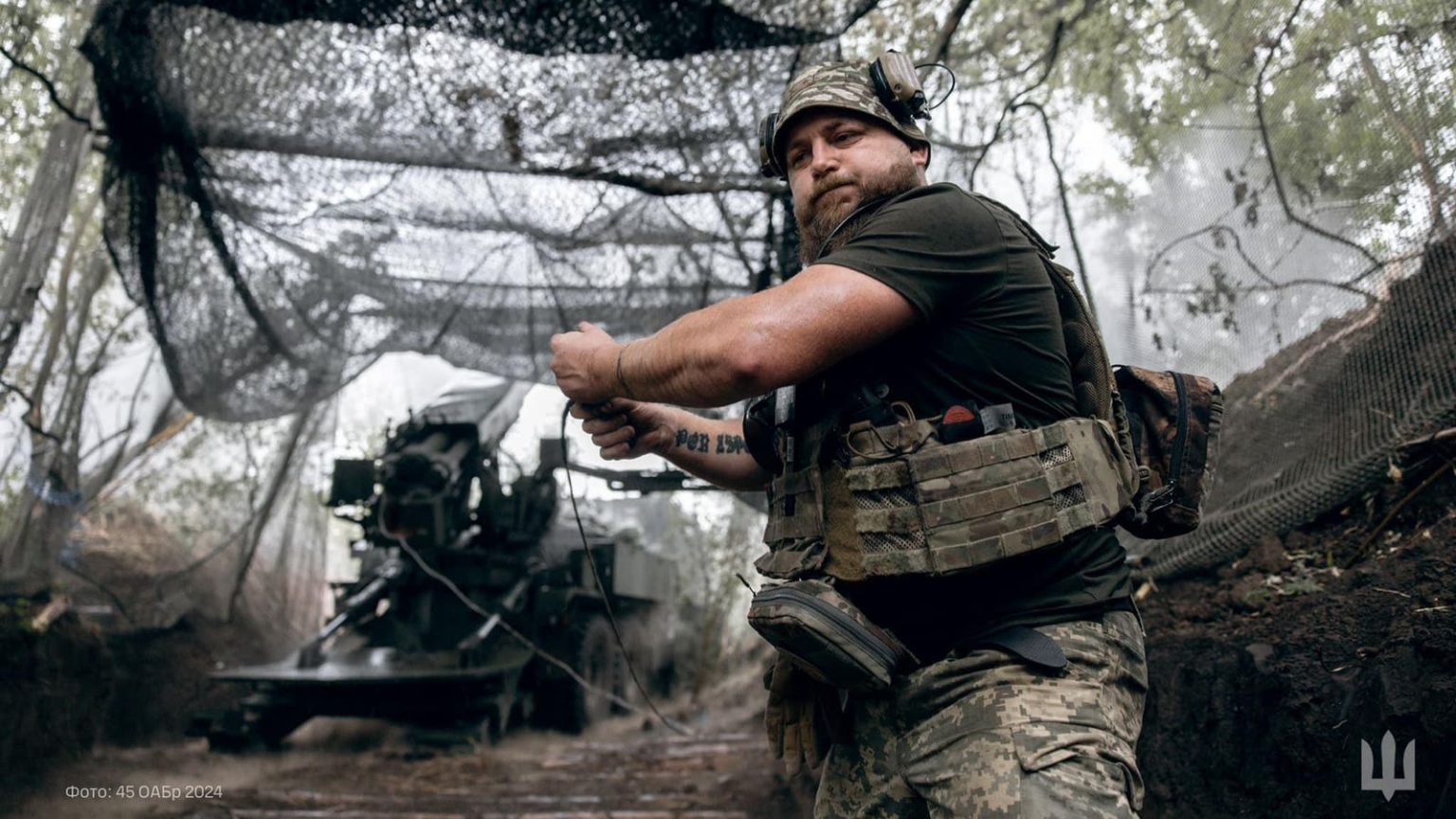Eleven days in their invasion of Russia’s Kursk Oblast, Ukrainian troops firmly control 200 square miles of Kursk—and contest an additional 350 square miles.
But the galloping advance has cost the Ukrainian invasion corps—made up of around a half-dozen brigades and a few independent battalions plus supporting units—a significant number of precious armored vehicles plus potentially scores of troops.
Russian forces have lost only a few vehicles but their bewildered infantry have surrendered to the attacking Ukrainians by the dozen.
The ratio of equipment losses—heavy Ukrainian write-offs compared to relatively few Russian write-offs—is unusual. On average throughout Russia’s 29-month wider war on Ukraine, the Russians have lost many more vehicles than the Ukrainians.
Whether the high losses are worth it to the general staff in Kyiv depends on the invasion’s objectives—and whether the loss ratio flips as the Kursk campaign develops.
On an average day in the 905-day wider war, the Russian military loses nearly four tanks and nearly eight infantry vehicles, according to a running tally by the analysts at Oryx. The Ukrainian military loses just one tank and three infantry vehicles on an average day.
Ukraine’s invasion of Kursk has not been average. Rolling across the border through gaps in Russian defenses on Aug. 6, Ukrainian forces restored maneuver to a war that, for many months, has been static: both sides fighting from trenches and struggling to advance more than a few hundred yards at a time.
But the Ukrainian maneuvers have exposed their tanks and infantry vehicles to Russian drones, artillery and ambushes. In the first nine days of the invasion, the Ukrainians lost four tanks and 41 infantry vehicles, according to one Oryx analyst. The losses have included a rare British-made Challenger 2 tank and several American-supplied Stryker fighting vehicles.
The attrition of infantry vehicles—including tracked fighting vehicles and wheeled personnel carriers—has been especially acute for the Ukrainian armed forces. They’re losing these valuable vehicles at almost double the normal rate. And where the average loss rate is for the entire 700-mile front of the wider war, those losses in Kursk are occurring along a 50-mile front.
The loss of so much valuable equipment may not worry Ukrainian planners—provided, of course, the strategic gains of the Kursk campaign justify the material cost.
If Jack Watling, an analyst for the Royal United Services Institute in London is correct in his assessment, Ukraine wants Kursk Oblast as a bargaining chip. As a bargaining chip, the oblast might be worth—so far—a few dozen armored vehicles.
“Politically, the purpose of the operation is to build leverage ahead of possible negotiations,” Watling wrote in The Guardian. “If Donald Trump wins the U.S. presidency in November, the threat of withdrawing military-technical assistance is likely to force Kyiv to negotiate. The Ukrainian government wants to make sure that if it has to enter that process, it has things that Russia wants to trade for concessions.”
“The Ukrainian military, therefore, must take and hold a sizeable chunk of Russian land for the duration of potential negotiations,” Watling stressed.
It’s also possible that, as the pace of Ukrainian advance inevitably slows, the loss ratio flips. “There is a limit to how far this force can push before it overextends, meaning it will need to dig in soon if the Ukrainians are to hold the ground until negotiations,” Watling explained.
“The best-case scenario for Ukraine is that its units dig in and Russia—feeling compelled to retake the ground—suffers inordinate losses in trying to push the Ukrainians back.”
In that sense, the fighting in Kursk could begin to look more like the fighting along the front line in Ukraine, where poorly-trained Russian troops suffer heavy losses trying—and usually failing—to defeat entrenched Ukrainians.
For now, however, the Ukrainians are out in the open and on the move in Kursk. That makes them vulnerable—and prone to lose many more vehicles than they normally do.
Sources:
1. Deep State: https://deepstatemap.live/#10/51.1504940/35.4171753
2. Oryx: https://www.oryxspioenkop.com/2022/02/attack-on-europe-documenting-equipment.html; https://www.oryxspioenkop.com/2022/02/attack-on-europe-documenting-ukrainian.html
3. Naalsio: https://x.com/naalsio26/status/1823520515543155060
4. Jack Watling: https://www.theguardian.com/world/article/2024/aug/17/ukraine-offensive-russia-political-logic-but-high-risk-strategy
Read the full article here





